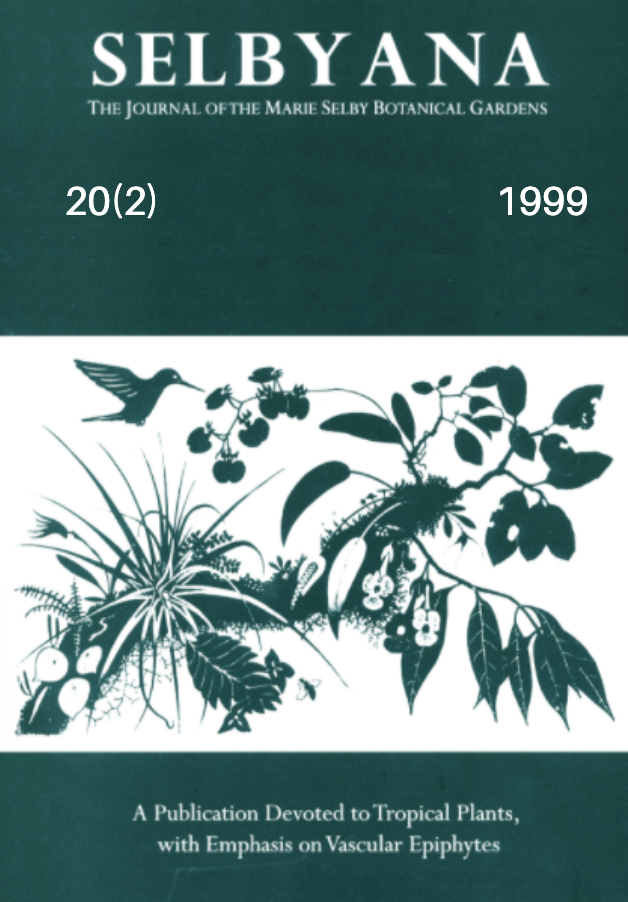Abstract
Population dynamics of the epiphytic bromeliad, Tillandsia brachycaulos, was followed for a year (October 1996 to October 1997) in a low-statured tropical deciduous forest in the Yucatan Peninsula, Mexico. Nine hundred and twenty individuals of this species, located on nine trees of Gymnopodium floribundum (Polygonaceae), were tagged. The individuals were classified into two major groups according to their origin: seed or vegetative propagation. Each group was subdivided with regard to height. Bimonthly demography censuses were carried out, where growth, survival, and fecundity were reported for each individual. Results indicate that most of the individuals arise from vegetative propagation (66%), highest mortality value was found in the seedling stage (71%), highest fecundity in the adult 3 stage (2.05 seedlings/individual), whereas the highest production of offshoots is presented by the adult 3 offshoot stage (1.13 offshoots/individual). A Lefkovitch matrix model was used to estimate the population finite rate of growth (λ), that resulted in a value of 0.91.
Open Access and Copyright Notice
Selbyana is committed to real and immediate open access for academic work. All of Selbyana's articles and reviews are free to access immediately upon publication. There are no author charges (APCs) prior to publication, and no charges for readers to download articles and reviews for their own scholarly use. To facilitate this, Selbyana depends on the financial backing of the Marie Selby Botanical Gardens, the hard work and dedication of its editorial team and advisory board, and the continuing support of its network of peer reviewers and partner institutions.
Authors are free to choose which open license they would like to use for their work. Our default license is the Creative Commons Attribution-NonCommercial 4.0 (CC BY-NC 4.0). While Selbyana’s articles can be copied by anyone for noncommercial purposes if proper credit is given, all materials are published under an open-access license with authors retaining full and permanent ownership of their work. The author grants Selbyana a perpetual, non-exclusive right to publish the work and to include it in other aggregations and indexes to achieve broader impact and visibility.
Authors are responsible for and required to ascertain that they are in possession of image rights for any and all photographs, illustrations, and figures included in their work or to obtain publication or reproduction rights from the rights holders. Contents of the journal will be registered with the Directory of Open Access Journals and similar repositories. Authors are encouraged to store their work elsewhere, for instance in institutional repositories or personal websites, including commercial sites such as academia.edu, to increase circulation (see The Effects of Open Access).
